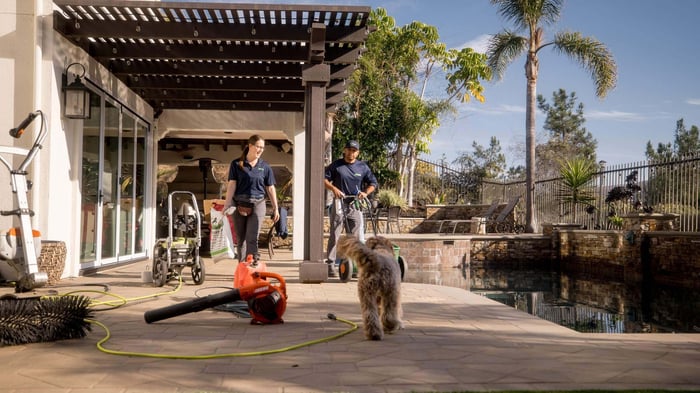No Products in the Cart

When it comes to commercial facilities, artificial turf cleaning isn’t just about aesthetics — it’s about safety, performance, and compliance. Synthetic turf is increasingly used in retail complexes, industrial properties, playgrounds, rooftop gardens, office courtyards, and even warehouses. While it offers low maintenance benefits compared to natural grass, it still requires regular care to remain safe, clean, and professional-looking. A clean turf not only protects the investment but also reduces liability by lowering the risk of slips, bacterial growth, or visibility issues.
Let’s look at how facility managers and property maintenance teams can establish a strong maintenance routine, enhance site safety with products like Mighty Line’s safety tape, and extend the life of artificial turf in high-traffic commercial environments.

Every commercial space that uses synthetic turf will experience different levels of traffic, weather exposure, and surrounding pollutants. For that reason, the cleaning schedule must be tailored. Here are key tasks to include:
Facilities near roads, trees, or food services will need more frequent turf maintenance.
Avoid harsh chemicals, high-pressure washers, or stiff-bristled brushes that can damage turf fibers or infill. Instead, invest in turf-specific tools such as:
These help maintain safety and cleanliness without degrading the turf surface over time.
Commercial turf areas in warehouses, break areas, or retail spaces may encounter spills from beverages, oils, or chemicals. Quick response is key:
Be proactive by placing signage or floor markings around turf areas where spills are more likely.

Safety tape plays a crucial role in protecting people and the turf. In commercial settings, clearly marking pedestrian lanes and restricted zones helps avoid unnecessary wear and enhances overall site safety.
Mighty Line’s durable, beveled-edge floor tape can be applied around artificial turf areas to:
Glow-in-the-dark and reflective options are ideal for visibility during low-light conditions. With Mighty Line’s peel-and-stick application and no-residue removal, your team can adjust markings as the layout evolves.
High foot traffic, food debris, pet activity, and moisture can all contribute to bacterial growth and unpleasant odors on turf. To prevent this:
Artificial turf that traps water is more prone to bacterial buildup, so inspect base layers annually.
Turf blades can become matted over time, especially in high-use areas like entrances or event spaces. Brushing the turf against the grain with a soft-bristle broom or turf rake keeps the blades upright and the surface consistent, which improves traction and visual clarity.
Uneven or flattened turf can increase the risk of trips or falls — something commercial property owners cannot afford.

Even the most durable synthetic turf systems can suffer from seams separating, infill migration, or burned areas from cigarettes or equipment. Early identification is essential:
High-visibility marking tape can be temporarily applied until repair crews arrive, ensuring staff and visitors avoid risky spots.
Different seasons bring unique challenges to turf maintenance in commercial environments:
Never use rock salt or chemical de-icers; instead, allow snow to melt naturally or use a turf-safe snow broom.
In high-traffic areas, it’s essential to secure turf edges and surrounding borders. Loose edges become tripping hazards. Use Mighty Line floor tape in high-vis colors like yellow or red to:
For turf installed in industrial workspaces or crossover zones, AGV-compatible Mighty Line centerline tape can help mark out vehicle and pedestrian routes that interact with turf areas.
Use Maintenance is most effective when everyone is on the same page. Post signage with basic turf rules such as:
Combining signage with Mighty Line floor signs and message tape helps reinforce these rules visually. Consider using custom-printed floor signs to include your facility name, safety symbols, or maintenance contact details.
Not all artificial turf applications are the same. Rooftop terraces, daycare play yards, and event venues each need custom approaches. For example:
Custom floor tape and floor signs with specific icons or wording can streamline communication and ensure turf areas are respected.

Maintaining commercial artificial turf doesn’t end with vacuums and brushes. Floor marking products like those from Mighty Line ensure your turf areas remain clean, safe, and functional. With peel-and-stick durability, custom options, and compliance with 5S standards, Mighty Line is a critical partner for any facility looking to maximize safety and organization.
Mighty Line's full range of industrial-grade floor tapes, signs, and accessories are already trusted by professionals to enhance safety and organization in turf-adjacent environments.